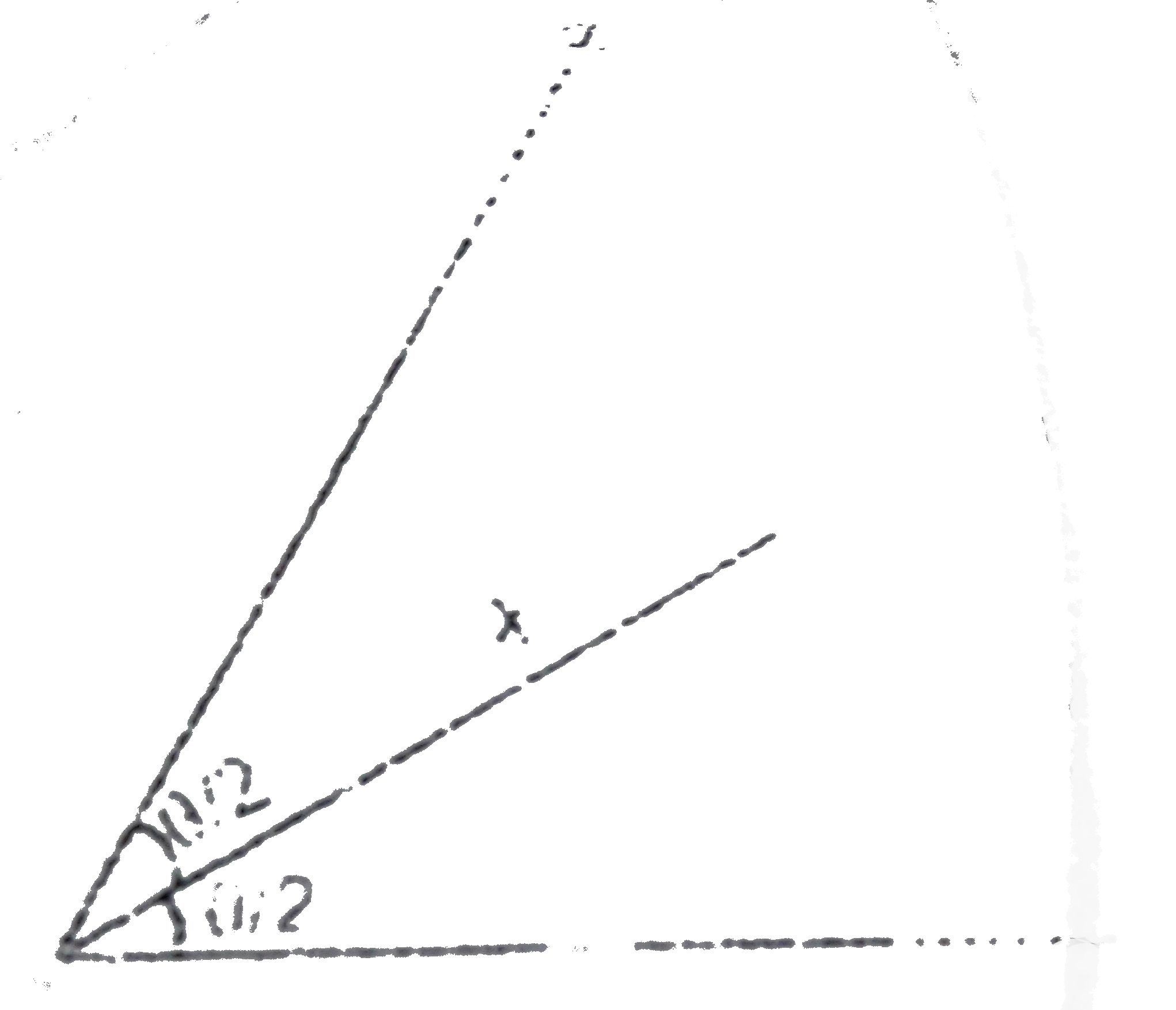Two wires PQ and QR carry equal currents I. One end of each wire extends to infinity and ∠PQR=θ. The magnitude of the magnetic field at O on the bisector of angle ∠PQR at a distance r from point Q is Solution in Bengali
μ04π.Irsinθ2
μ04π.Ircot(θ2)
μ04π.Irtanθ2
μ02π.Irt⎛⎝1+cosθ2sinθ2⎞⎠
Step by step video & image solution for Two wires PQ and QR carry equal currents I. One end of each wire extends to infinity and anglePQR=theta. The magnitude of the magnetic field at O on the bisector of angle anglePQR at a distance r from point Q is by Physics experts to help you in doubts & scoring excellent marks in Class 12 exams.
Updated on:21/07/2023Topper's Solved these Questions
- ELECTROMAGNETISM Book:CHHAYA PUBLICATIONChapter:ELECTROMAGNETISM Exercise:SHORT ANSWER TYPE QUESTIONS-I
Explore 17 Videos
- ELECTROMAGNETISM Book:CHHAYA PUBLICATIONChapter:ELECTROMAGNETISM Exercise:SHORT ANSWER TYPE QUESTIONS-II
Explore 3 Videos
- ELECTROMAGNETISM Book:CHHAYA PUBLICATIONChapter:ELECTROMAGNETISM Exercise:NCERT EXAMPLAR QUESTIONS WITH ANSWER HINT (MCQ-2)
Explore 4 Videos
- ELECTROMAGNETIC WAVES Book:CHHAYA PUBLICATIONChapter:ELECTROMAGNETIC WAVES Exercise:CBSE SCANNER
Explore 17 Videos
- ELEMENTARY PHENOMENA OF ELECTROSTATICS Book:CHHAYA PUBLICATIONChapter:ELEMENTARY PHENOMENA OF ELECTROSTATICS Exercise:EXAMINATION ARCHIVE
Explore 2 Videos
Similar Questions
Draw a diagram of the magnetic lines of force to show that a current carrying solenoid is equivalent to a bar magnet.
View SolutionWhat will be the nature of the force acting on a current carrying conductor due to current through another parallel conductor?
View SolutionConsider a wire carrying a steady current I placed in a uniform magnetic field →B. Consider the charges inside the wire. It is known that magnetic forces do no work. This implies that
View SolutionWhat are the directions of electric and magnetic field vectors relative to each other and relative to the direction of propagation of electromagnetic waves?
View SolutionDefine surface density of electric charge
View SolutionIn Fig. two long parallel wires (seen end-on) that are a distance R apart carry equal currents i in the same sense. Find the magnitude of the magnetic field at point P , which lies quidistant from the two wires at an angle theta from the plane of the wires.
View SolutionTwo wires AO and OC carry equal currents i as shown in Fig. One end of both the wires extends to infinity. Angle AOC is alpha . The magnitude of magnetic field is point P on the bisector of these two wires at a distance r from point O is
View SolutionAn infinitely long wire carrying current I is along Y-axis such taht its one end is at point A(0,b) while the wire extends upto +∞. The magnitude of magnetic field strength at point (a,0) is

View SolutionTwo wires CO and OA carry equal currents I as shown in figure. One end of both the wires extends to infinity. Given ∠AOC=θ. What is the magnitude of magnetic field induction at a point P at a distance r from O lying on the bisector of angle θ.

View SolutionA long wire carrying i is bent to form a plane angle θ.Find the magnetic field B at a point on the bisector of this angle situated at a distance x from the vertex is written in the form of Kcotθ4Tesla.Then, find the value of K.

View SolutionA current carrying wire is bent in the L shapes as shown in figure. The length of both arms extend to infinity. Then, the magnetic field at O is-
View SolutionA steady current I flows through a wire with one end at O and the other end extending upto infinity as shown in the figure. The magnetic field at a point P, located at a distance d from O is
View SolutionThe magnitude of magnetic field at a distance 'r' from a long straight wire carrying a current I is given by B = …………………… .
View SolutionPQR wire | The current is flowing. It is folded as per the picture and kept in the same magnetic field if PQ = and anglePQR = 60^(@) Then the ratio of magnetic forces on PQ and QR will be:
View SolutionTwo wires AO and OC carry equal currents i as shown in the figure where ⌊AOC=θ ,Find the magnitude of the magnetic field at the point P on the bisector of anlge θ at a distance 'r' from O. Assume that the other ends of both wires extend to infinity

View Solution

